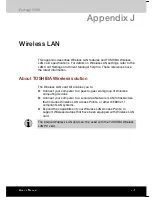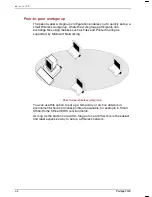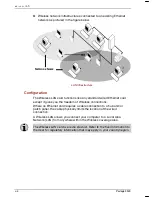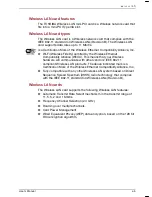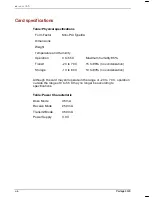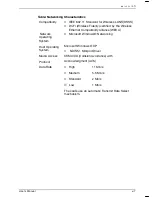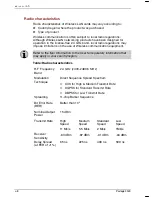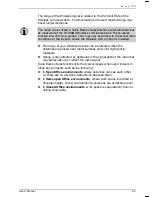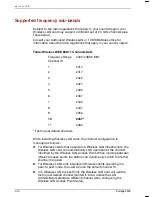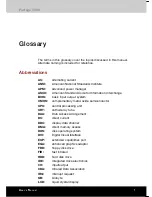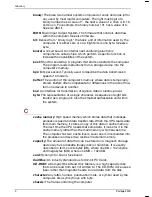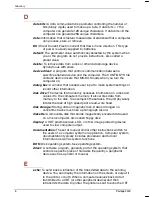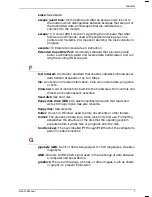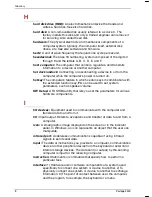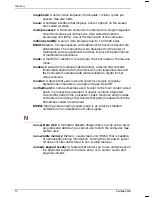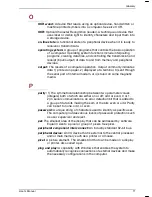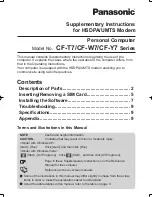
Glossary
User’s Manual
5
Portégé 3500
Version
1
Last Saved on 17.10.2002 17:31
chip:
A small semiconductor containing computer logic and circuitry for
processing, memory, input/output functions and controlling other
chips.
CMOS:
Complementary Metal-Oxide Semiconductor. An electronic circuit
fabricated on a silicon wafer that requires very little power.
Integrated circuits implemented in CMOS technology can be
tightly packaged and are highly reliable.
cold start:
Starting a computer that is currently off (turning on the power).
commands:
Instructions you enter at the terminal keyboard that direct
the actions of the computer or its peripheral devices.
communications:
The means by which a computer transmits and
receives data to and from another computer or device.
compatibility:
1) The ability of one computer to accept and process data
in the same manner as another computer without modifying the
data or the media upon which it is being transferred. 2) the ability
of one device to connect to or communicate with another system
or component.
components:
Elements or parts (of a system) which make up the whole
(system).
computer program:
A set of instructions written for a computer that
enable it to achieve a desired result.
computer system:
A combination of hardware, software, firmware, and
peripheral components assembled to process data into useful
information.
configuration:
The specific components in your system (such as the
terminal, printer, and disk drives) and the settings that define how
your system works. You use the HW Setup program to control your
system configuration.
control keys:
A key or sequence of keys you enter from the keyboard to
initiate a particular function within a program.
controller:
Built-in hardware and software that controls the functions of a
specific internal or peripheral device (e.g. keyboard controller).
CPS:
Characters per second. Typically used to indicate the transmission
speed of a printer.
CPU:
Central processing unit. The portion of the computer that interprets
and executes instructions.
CRT:
Cathode Ray Tube. A vacuum tube in which beams projected on a
fluorescent screen-producing luminous spots. An example is the
television set.
cursor:
A small, blinking rectangle or line that indicates the current
position on the display screen.
Summary of Contents for Portege 3500
Page 1: ...Portégé 3500 User s Manual i 3500 Portable Personal Computer User s Manual ...
Page 172: ...Keyboard Layouts User s Manual D 1 TTIRHM I FSEVH 0E SYXW Belgian 4SVXÃKÃ 9WIVkW 1ERYEP ...
Page 173: ...Keyboard Layouts D 2 Portégé 3500 Danish French ...
Page 174: ...Keyboard Layouts User s Manual D 3 German Italian ...
Page 175: ...Keyboard Layouts D 4 Portégé 3500 Norwegian Spanish ...
Page 176: ...Keyboard Layouts User s Manual D 5 Swedish Swiss German ...
Page 177: ...Keyboard Layouts D 6 Portégé 3500 UK English US English ...
Page 186: ...ASCII Character Codes G 2 Portégé 3500 ...
Page 187: ...ASCII Character Codes User s Manual G 3 ...
Page 188: ...ASCII Character Codes G 4 Portégé 3500 ...
Page 189: ...ASCII Character Codes User s Manual G 5 ...

